New Empty Bowl books by Red Pine
Posted: January 25, 2020 Filed under: books, Buddhism Zen, people, states of mind, writers Leave a comment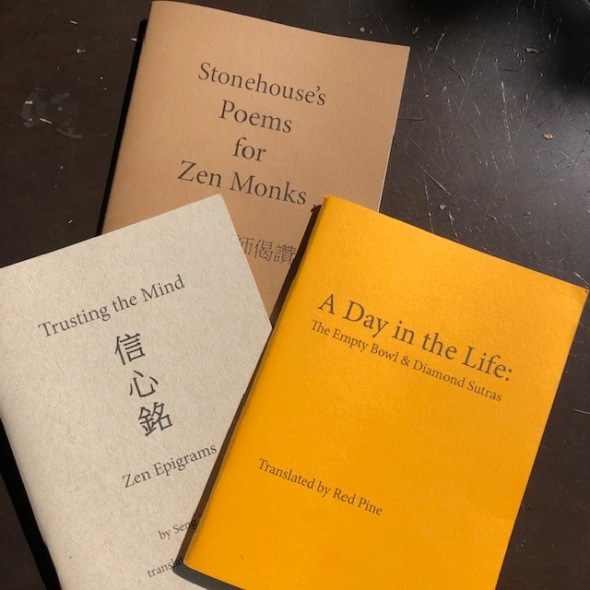
Three new chapbooks by Red Pine’s Empty Bowl Press. Order at Amazon.
Emerson on the books we read
Posted: January 12, 2020 Filed under: books, people, time and space, writers Leave a comment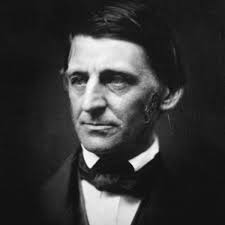
“I cannot remember the books I read any more than the meals I have eaten, even so, they have made me.”
A New Edition of David Loy’s Non-Duality, A Classic
Posted: January 4, 2020 Filed under: Buddhism Zen, people, religion, states of mind, writers 1 Comment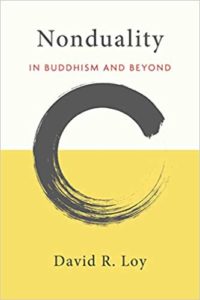
Loy’s book is essential for anyone practicing some level of Zen, Buddhism, Taoism, or a student of the writings of Heidegger or the Japanese philosophers related to the writings of Suzuki, Abe, et al. Loy was a student in Yamada Roshi’s Sanbo Kyodan lineage. The new edition has a revised introduction and notes; it is published by Yale University Press.
D.T. Suzuki jottings
Posted: October 21, 2019 Filed under: Buddhism Zen, people, states of mind, writers Leave a comment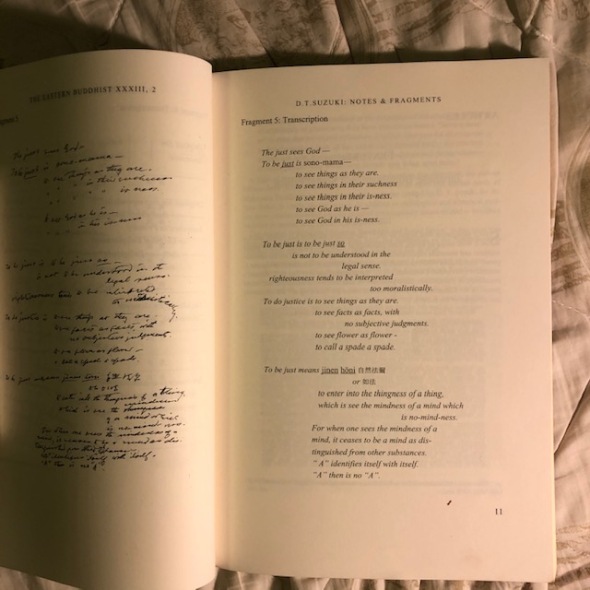
This is part of several fragments and notes jotted down on the back of an envelope by D.T. Suzuki and published in The Eastern Buddhist in Vol XXXIII No. 2 in 2001. They were immediate flashes of his inner experience and understanding as contrasted with the careful prose found in his essays and books.
Ibsen’s ‘life-lie’
Posted: October 20, 2018 Filed under: people, states of mind, writers Leave a comment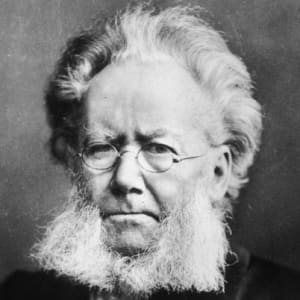
“If you take the life-lie away from the average person, you take away his happiness as well.” –– Dr. Relling in Ibsen’s “The Wild Duck,” Act 4.
The Internet’s tangled web
Posted: May 28, 2018 Filed under: articles, books, people, states of mind, writers Leave a comment
Friends, an important book on technology is discussed below. This was forwarded to me by my friend Don Handley, who lives in Thailand: You may be well aware of this issue, but I like the way the book’s author, Jaron Lanier, puts it:
From Don Handley: “Below are the final few paragraphs from Maureen Dowd’s opinion column yesterday [May 27, 2018] in the NYTimes called Grifters Gone Wild. I feel conflicted about my ongoing use of Facebook and Instagram, and even more conflicted after reading this opinion piece yesterday. I guess my alternatives are to use email to stay in touch with friends and the Blogger blog to post my photos to instead of Facebook and Instagram:
Dowd writes: Jaron Lanier, the scientist and musician known as “the father of virtual reality,” has a new book out, “Ten Arguments for Deleting Your Social Media Accounts Right Now.” He says that the business plans of Facebook and Google have served to “elevate the role of the con artist to be central in society.” [While of course doing much more…RH] “Anytime people want to contact each other or have an awareness of each other, it can only be when it’s financed by a third party who wants to manipulate us, to change us in some way or affect how we vote or what we buy,” he says.
“In the old days, to be in that unusual situation, you had to be in a cult or a volunteer in an experiment in a psychology building or be in an abusive relationship or at a bogus real estate seminar. “But now you just need to sign onto Facebook to find yourself in a behavior modification loop, which is the con. And this may destroy our civilization and even our species.” Lanier worries, now that tech has lost its halo, that there is nothing optimistic to replace it. “We don’t believe in government,” Lanier says. “A lot of people are pissed at media. They don’t like education. People who used to think the F.B.I. was good now think it’s terrible. With all of these institutions the subject of ridicule, there’s nothing — except Skinner boxes and con artists.”
––––––
Personally, I’m going to erase my limited presence on Facebook and other social media platforms. But is it too late? Has the “con” and the “addiction” gone too far and blinded the masses? Also, by nature I must retain my belief that technology is inherently benign and can be controlled for the common good, but my gut says if you allow greed and con artists unfettered access to one of the most powerful platforms and tools in the world, they will corrupt it – and our culture – as sure as fire burns.
“Do no harm” is the right idea, but the smart people who run Silicon Valley collectively represent the other side of an enduring debate that highlights the gap between the “two cultures,” most recently sparked by C. P. Snow’s book, The Two Cultures, in 1959. The two cultures concept is a fuzzy description, but generally it represents the scientific and the non-scientific.
From Wikipedia: Snow said: “A good many times I have been present at gatherings of people who, by the standards of the traditional culture, are thought highly educated and who have with considerable gusto been expressing their incredulity at the illiteracy of scientists. Once or twice I have been provoked and have asked the company how many of them could describe the Second Law of Thermodynamics. The response was cold: it was also negative. Yet I was asking something which is the scientific equivalent of: Have you read a work of Shakespeare‘s?[5]
“I now believe that if I had asked an even simpler question – such as, What do you mean by mass, or acceleration, which is the scientific equivalent of saying, Can you read? – not more than one in ten of the highly educated would have felt that I was speaking the same language. So the great edifice of modern physics goes up, and the majority of the cleverest people in the western world have about as much insight into it as their neolithic ancestors would have had.[5]”
Unfortunately, both the public body and our governing class are only now coming around to the immediate issues surrounding Facebook. While not grappling with the larger consequences, we are simultaneosly gutting education – the only hope that the “two cultures” can be reconciled in a beneficial way – accomodating both sides of our human nature.
The governing class is poorly equipped to deal with this clash of cultures. At the same time, we have a president – a Supreme Con Artist on Twitter – who leads a movement to discredit experts and intellectuals, wherever they are found within the two cultures.
Clearly, it’s a setup for a potential, unintended cultural tragedy. We desperately need a combined body that represents the two cultures to come to some sensible conclusions and recommendations. It’s imperative that discussion begins and is ongoing.
We need enlightened gatekeepers to filter out and better control the corrupting influences of the Internet. The legitimate media is trying to counter balance the malignancy that’s attacking our culture, but the “con” loop is constantly perpetuating its own world of self-interest.
Too little, too late is a real danger. May Lanier’s book shine a light on the way forward.
The Rain Tree at the Gymkhana Club
Posted: May 13, 2018 Filed under: books, people, places, states of mind, writers, writing Leave a comment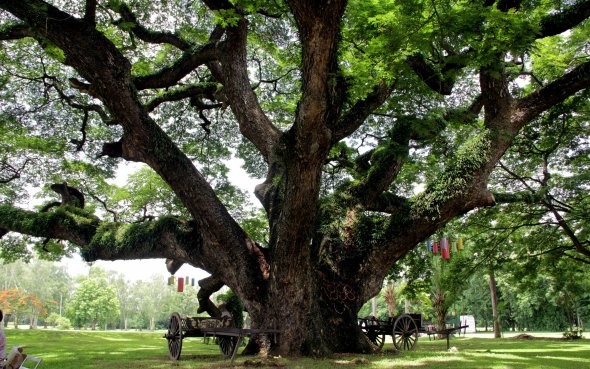
The rain tree at the Gymkhana Club in Chiang May, Thailand.
The Rain Tree at the Gymkhana Club
This is a copyrighted excerpt of an unpublished travel book I’ve written about Southeast Asia.
Do not require a description of the countries toward which you sail. The description does not describe them, and tomorrow you arrive there and know them by inhabiting them. –Emerson, The Over-Soul
Many writers have left exact descriptions of their first taste of Asia. For Joseph Conrad, the East’s charm was a state of mind he called romantic reality. It animated many of his best-known characters, like the young seaman in Lord Jim, who longed to lose himself, to be stripped to a bare, primitive moment.
“This in itself may be a curse,” Conrad wrote, “but, when disciplined by a sense of personal responsibility and a recognition of the hard facts of existence shared with the rest of mankind, it becomes but a point of view from which the very shadows of life appear endowed with an internal glow. It only tries to make the best of it, hard as it may be; and in this hardness discovers a certain aspect of beauty.”
To be under the spell of a place, or a state of mind, is to quicken the blood, but behind the spell lies a deeper mystery in the subconscious, a desire to answer an indefinable call.
In the novel Youth, Conrad described the exact moment when Marlow, the narrator, first sensed the East: “ … and suddenly a puff of wind, a puff faint and tepid and laden with strange odors of blossoms, of aromatic wood, comes out of the still night — the sigh of the East on my face.”
Marlow, and Conrad, never escaped the spell of that sublime moment, the sense of life flowing from a new direction, a shift of culture from Western to Eastern. For some of us, it’s a seduction of the soul. Writing as Marlow, Conrad said, “But for me, all of the East is contained in that vision of my youth. It is all in that moment when I opened my young eyes on it … and I saw it looking at me.”
In the short story The Shadow-Line, he described the Bangkok of the 1890s, at the time of his character’s first sighting: “One early morning we steamed up the innumerable bends, passed the shadow of the great gilt pagoda, and reached the outskirts of town. There it was, spread largely on both banks, the oriental capital which had yet suffered no white conqueror. Here and there in the distance, above the crowded mob of low, brown roof ridges, towered great piles of masonry, king’s palaces, temples, gorgeous and dilapidated, crumbling under the vertical sunlight, tremendous, overpowering, almost palpable, which seemed to enter one’s breast with the breath of one’s nostrils and soak into one’s ribs through every pore of one’s skin.”
A very different writer, the cosmopolitan Somerset Maugham, toured Burma and Siam in the 1920s. In a nearly forgotten travel book, The Gentleman in the Parlour, he captured a fading moment when Bangkok had yet to blend into the West:
“The traffic of the river ceased and only now and then did you hear the soft splash of a paddle as someone silently passed on his way home. When I awoke in the night, I felt a faint motion as the houseboat rocked a little and I heard a little gurgle of water, like the ghost of an Eastern music traveling not through space but through time.
“A leisurely tram crowded with passengers passes down the whole length of the street, and the conductor never ceases to blow his horn. Rickshaws go up and down ringing their bells, and motors sounding their claxons. The pavements are crowded and there is a ceaseless clatter of the clogs the people wear. Cloppity-clop they go, and it makes a sound as insistent and monotonous as the sawing of the cicadas in the jungle.”
Along with the romantic view of the East, there’s also the other side of the story offered by writers who left different impressions of how the East and West are separated by cultural attitudes and mores.
Alex Waugh left a depressing portrait of expatriate, turn-of-the-century Siam in Hot Countries,published in 1930. Describing colonial life and the “natives” in Chiang Mai, he reflected the racist attitude and language of British colonial culture. He presumed a Western superiority and his attitudes reflected a personal repression and guilt around sexual mores. He used the expression “gone native” as a rebuke to Westerners who tried to enter into normal Asian life and culture, or who openly took girlfriends or wives and shared their culture. As a journalist who racked up books about exotic countries like they were way stations on a news beat, Waugh left a telling picture of “white life” in old Chiang Mai. It was especially difficult on Western women, he wrote, and he urged them to stay home rather than endure a life of isolation, boredom and disease. He admitted he’d never personally known a case of a white man who had “gone native,” but he’d heard rumors and had constant suspicions.
“In the popular imagination,” he wrote, “the ‘gone native’ myth has become identified with that very different, very real problem of the tropics — the white man and the brown woman.”
He wrote: “In Bangkok, it would be impossible for a white man to have a Siamese girl living in his bungalow, but on the plantation there is fairly often a Malay girl who disappears discretely when visitors arrive. There the relationship has a certain dignity. There is faithfulness on both sides. Custom creates affection. But in neither case is there any approach to the ‘gone native’ picture. In neither case has the white man done anything that involves loss of caste. He observes the customs of the country.”
Waugh goes on: “All the same, I believe it is extremely rare for there to exist a profound relationship between a white man and a brown woman. I have yet to meet the man who will say that he has really loved a coloured woman.”
And, “Love, as we understand it, is foreign to these people.” And, “Between brown and white there can be only a brief and superficial harmony.” And, “Between brown and white there can be no relation interesting in itself.”
To reach Chiang Mai, Waugh took the Bangkok passenger train for a 27-hour journey north. By river, it was five weeks. Chiang Mai was the administration center of two large timber companies, the Borneo Company and Bombay Burma. He thought he was going to the end of the Earth where the “white community” had to unite against a “common foe.”
“There are not, I fancy, more than 30 white people in the station,” he wrote. “There is the bank manager and the English consul; there are the forest manager and an occasional assistant who has come in from the jungle for a rest; there is an American mission, which is responsible for schools and the hospital and a big sanatorium for lepers.”
The social “white life” of Chiang Mai centered around the Gymkhana Club, chartered in 1898, and still in operation today. As I write this, I sit in the shade of a majestic rain tree that is older than the club, its huge limbs extending over the outdoor tables.
Waugh wrote: “It is a large field set a little way out of town which serves as a polo ground, a golf course and a tennis court. By 5 in the evening, most of the white community is there. There are 75 minutes of strenuous exercise, then there’s a gathering around a large table on which have been set drinks, glasses, and a little lamp. There are rarely more or rarely less than a dozen people there … the women have slipped their legs into sarongs, sewn up at one end in the shape of bags. Their life is hard and testing. It has many dangers, many difficulties. It is only by mutual tolerance, by interdependence, by loyalty and friendship that it can be made tolerable.”
The rain tree is a stone’s throw from the northern bank of the Mae Ping River as it winds past the city’s old Chinese night market and the tourist hotels. For decades, the club remained a tranquil oasis of white privilege with cricket and squash courts. But after World War II it fell on hard times.
By the late 1950s, the last of the Western lumber concessions had disappeared, and the club membership dwindled to fewer than 20 people. To avoid bankruptcy, the directors voted to offer 12 Thais full membership. By early 2000, membership had rebounded to around 300 people, and Thais numbered about 60 percent. One Westerner served on the board of directors.
The centerpiece of the club is still the venerable rain tree, its spreading limbs marking the passage of time. Its shade fell across the visiting Waugh, whose cultural blinders prevented him from truly knowing Asians.
***
To live here one would be charged in the quiet, small currency of the conscience.– Graham Greene, describing Vietnam in Reflections
The generation between Waugh’s Hot Countries and Graham Greene’s novel,The Quiet American,published in 1955, saw sweeping cultural changes. In The Quiet American,the correspondent Thomas Fowler, Greene’s alter ego, admits his desire to marry his enchanting Vietnamese mistress, Phoung. But his cynicism still colors their relationship. At first, it’s as if he’s taking on a beautiful naïf, a woman perfectly designed to be of service to a superior Western man. Later, he understands that the reverse is closer to the truth.
Phuong is the classic Vietnamese mistress, a heroine who deftly controls and dispenses her emotions and affections between Fowler and his nemesis, Alden Pyle, the wide-eyed, naive American who works for the CIA. Phuong is capable of breaking the idealistic Pyle’s heart, but she presents little romantic danger to Fowler, who prides himself on being a dispassionate observer, a stoic who sees emotional attachment to Phoung as sacrifice or vulnerability. Fowler is a post-Colonial man poised at a moment of realistic, romantic growth, but only barely. He starts off with the typical, cultural baggage that many expatriates still carry around today like baggage off a Boeing 787. He thinks: “It is a cliché to call them children — but there’s one thing which is childish. They love you in return for kindness, security, the presents you give them — they hate you for a blow or an injustice. They don’t know what it’s like, just walking into a room and loving a stranger. For an aging man, it’s very secure. She won’t run away from home so long as the home is happy.”
Later, Fowler’s cynicism is shaken and his emotions expand when he realizes Phuong “was as scared as the rest of us — she didn’t have the gift of expression, that was all.” It was something he should have understood long before, but worth understanding at any age. To know the other is as hard as to know one’s self, if not harder.
The old codes and cultural ways erode before our eyes. We have a long way to go to know Asian cultures, but the same can be said for truly knowing our own culture. The work of this century is to bridge the gap between East and West, or else we run the risk of believing we are more unalike than alike. Copyright @ Roy Hamric
Gary Cartwright quote
Posted: April 17, 2018 Filed under: people, states of mind, writers Leave a comment“Anything that’s not a mystery is guesswork.” ––Gary Cartwright, writer.

A Kind of Writer…
Posted: September 3, 2017 Filed under: people, photography, writers, writing Leave a comment
Ernest Hemingway at “La Consula”, Bill Davis’ estate in Spain, circa 1959. Photograph by Mary Hemingway.
“I’m the kind of writer who can discard a sheet of manuscript paper without crumpling it up into a ball.” – Ernest Hemingway.
On this day 200 years ago, Henry David Thoreau was born.
Posted: July 12, 2017 Filed under: books, photography, poetry, states of mind, writers Leave a comment
 Thoreau spent two years, two months and two days in a cabin near Walden Pond where he wrote Walden. He spent a little over two years at the cabin, and used one year, the four seasons, as a metaphor for growth in Nature and in human nature. He was urged on in his inner pursuits by Ralph Waldo Emerson, his neighbor, who was firing up the emergent, new American imagination. Walden was Thoreau’s personal attempt at spiritual enlightenment and a flag for self-reliance in the search for inner growth and peace. Again, I have to say the book that opens up Walden like no other is Stanley Cavell’s Senses of Walden, which really should be read before reading Walden.
Thoreau spent two years, two months and two days in a cabin near Walden Pond where he wrote Walden. He spent a little over two years at the cabin, and used one year, the four seasons, as a metaphor for growth in Nature and in human nature. He was urged on in his inner pursuits by Ralph Waldo Emerson, his neighbor, who was firing up the emergent, new American imagination. Walden was Thoreau’s personal attempt at spiritual enlightenment and a flag for self-reliance in the search for inner growth and peace. Again, I have to say the book that opens up Walden like no other is Stanley Cavell’s Senses of Walden, which really should be read before reading Walden.

Thoreau’s notebook journal from Nov. 11, 1858.
